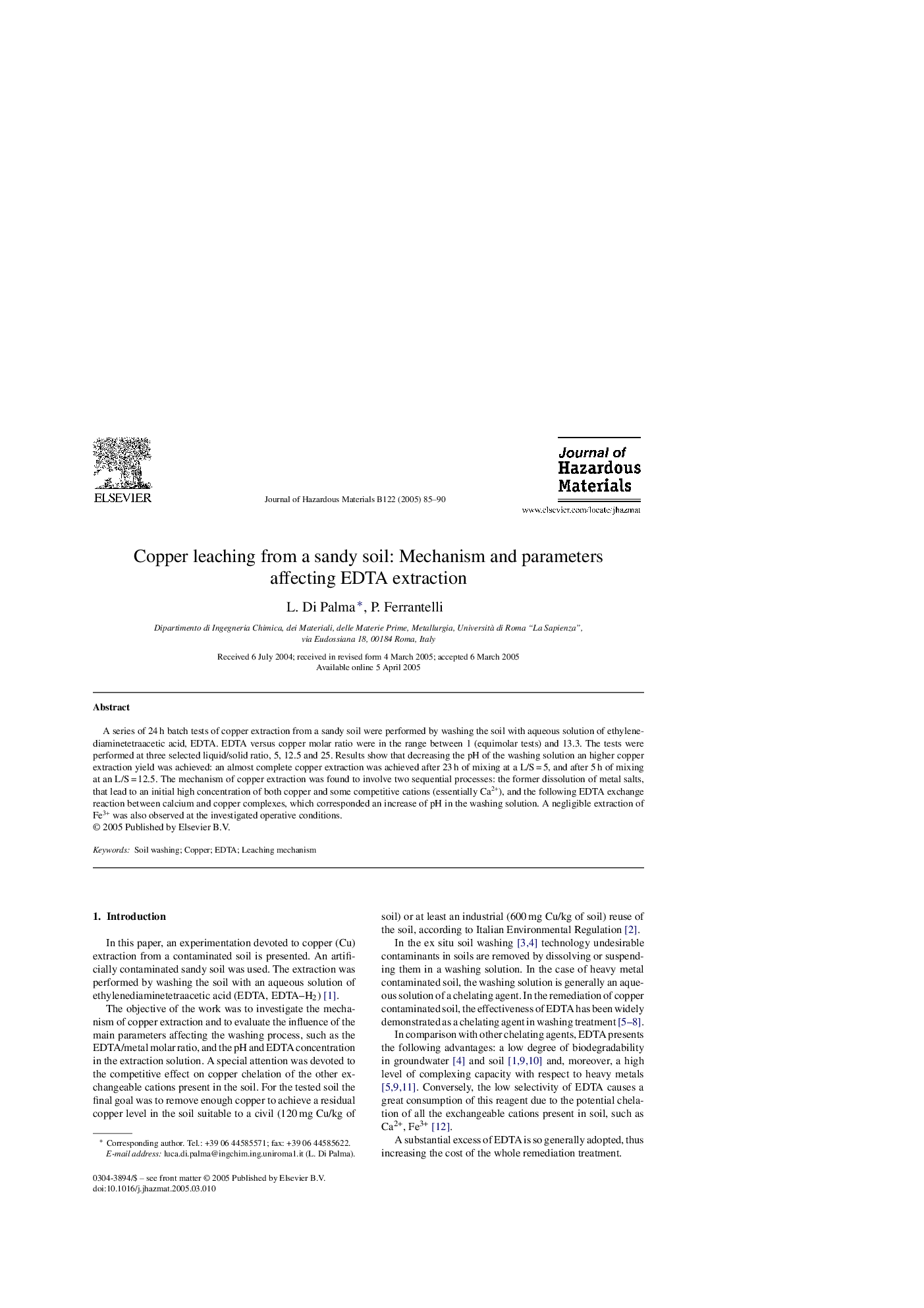| Article ID | Journal | Published Year | Pages | File Type |
|---|---|---|---|---|
| 9674240 | Journal of Hazardous Materials | 2005 | 6 Pages |
Abstract
A series of 24Â h batch tests of copper extraction from a sandy soil were performed by washing the soil with aqueous solution of ethylenediaminetetraacetic acid, EDTA. EDTA versus copper molar ratio were in the range between 1 (equimolar tests) and 13.3. The tests were performed at three selected liquid/solid ratio, 5, 12.5 and 25. Results show that decreasing the pH of the washing solution an higher copper extraction yield was achieved: an almost complete copper extraction was achieved after 23Â h of mixing at a L/SÂ =Â 5, and after 5Â h of mixing at an L/SÂ =Â 12.5. The mechanism of copper extraction was found to involve two sequential processes: the former dissolution of metal salts, that lead to an initial high concentration of both copper and some competitive cations (essentially Ca2+), and the following EDTA exchange reaction between calcium and copper complexes, which corresponded an increase of pH in the washing solution. A negligible extraction of Fe3+ was also observed at the investigated operative conditions.
Related Topics
Physical Sciences and Engineering
Chemical Engineering
Chemical Health and Safety
Authors
L. Di Palma, P. Ferrantelli,
